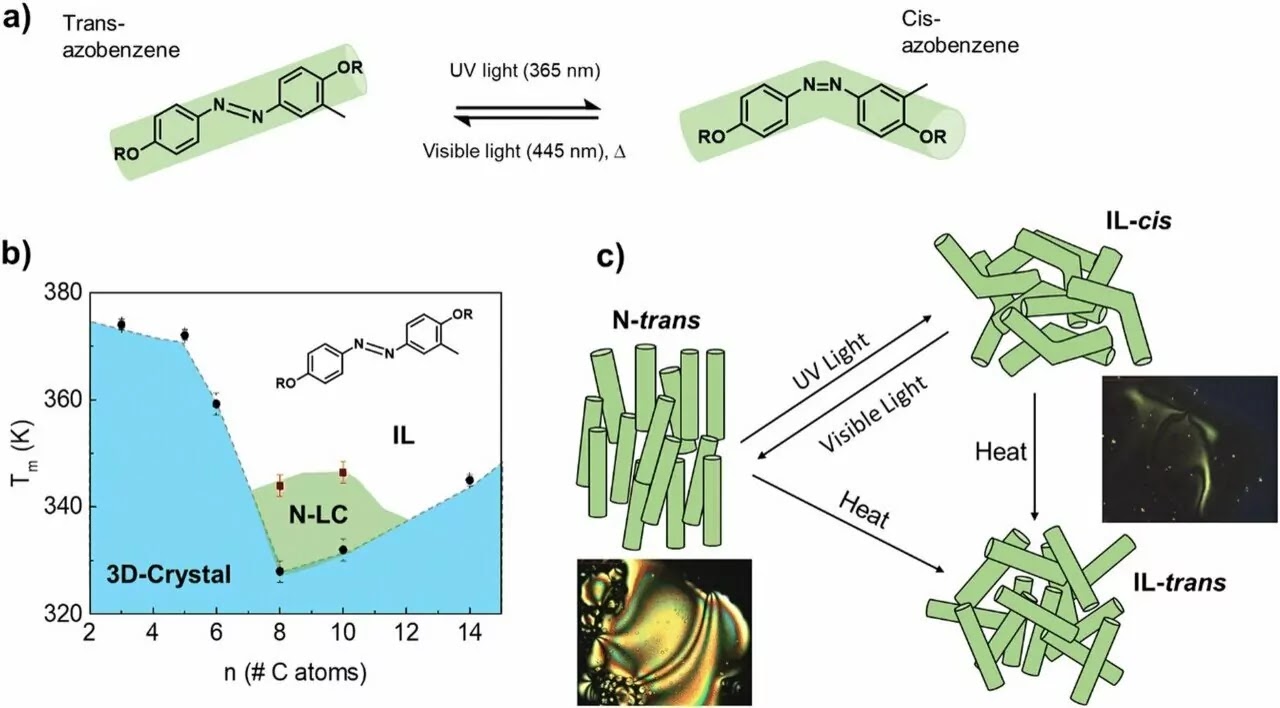Advancements in Thermal Liquid Crystals and Superionic Hydride Conduction
Thermal Liquid Crystals
Researchers at the University of Cambridge have developed a new method of controlling liquid crystals for thermal management. Liquid crystals are materials that exhibit properties of both liquids and crystals, which make them useful for a variety of applications including displays and sensors. This new method involves using an electric field to control the orientation of the liquid crystals, which in turn controls their thermal conductivity. By adjusting the orientation of the liquid crystals, the researchers were able to increase or decrease the thermal conductivity of the material. This breakthrough could have significant implications for the design of future electronic devices and other technologies that rely on thermal management.
Also Read:- Astronomers Discover a Strange Star and an Alien Exoplanet
- Why Humans Need to Create Earth-Like Conditions to Survive in Space
The team used a technique known as surface alignment to align the liquid crystals in a specific direction. They then used an electric field to rotate the orientation of the liquid crystals, which in turn controlled the flow of heat through the material. By controlling the thermal conductivity of the liquid crystals, the researchers were able to achieve a 50% reduction in temperature rise in a test device.
Superionic Hydride Conduction
Another breakthrough in materials science comes from a team of researchers at the University of Illinois. They have discovered a new material that exhibits superionic hydride conduction at room temperature. This means that the material can conduct electricity using hydrogen ions, which is a rare and valuable property. Superionic conductors have the potential to revolutionize energy storage and transportation, as they could enable the development of high-energy-density batteries and other devices.
The material discovered by the researchers is a type of perovskite, which is a class of materials that have a unique crystal structure. The team used a technique known as high-pressure synthesis to create the material, which involves subjecting the materials to extreme pressure and temperature conditions. They then measured the conductivity of the material using a variety of techniques, and found that it exhibited superionic hydride conduction at room temperature.
These breakthroughs in materials science have the potential to revolutionize a variety of industries. The new method of controlling liquid crystals for thermal management could be used in the design of more efficient electronic devices, while the discovery of a material with superionic hydride conduction could enable the development of high-energy-density batteries and other devices. As researchers continue to push the boundaries of materials science, we can expect to see even more exciting developments in the years to come.
Read More:That's it for this article.
Thanks for Visiting Us – fixyanet.com



0 Comments